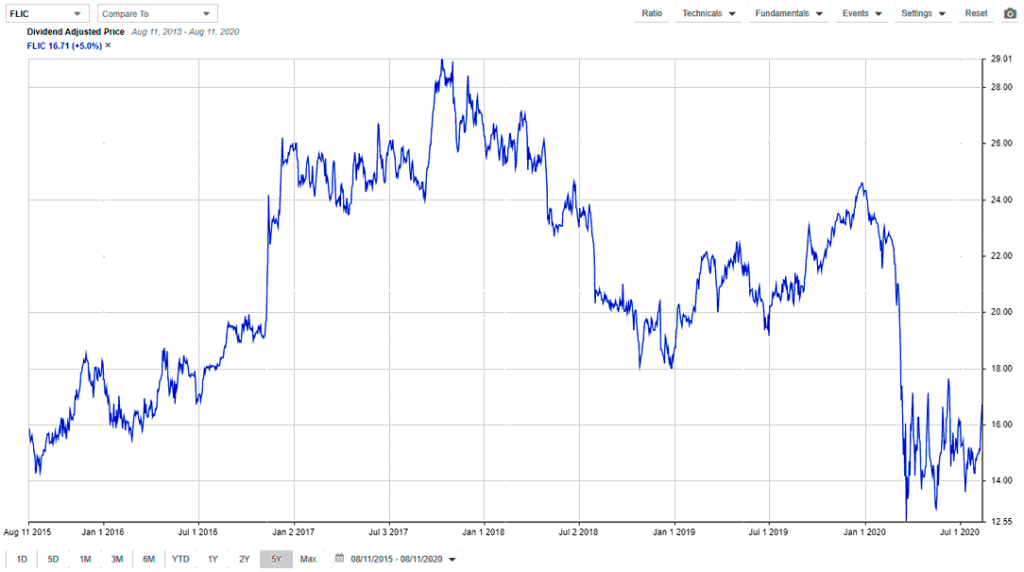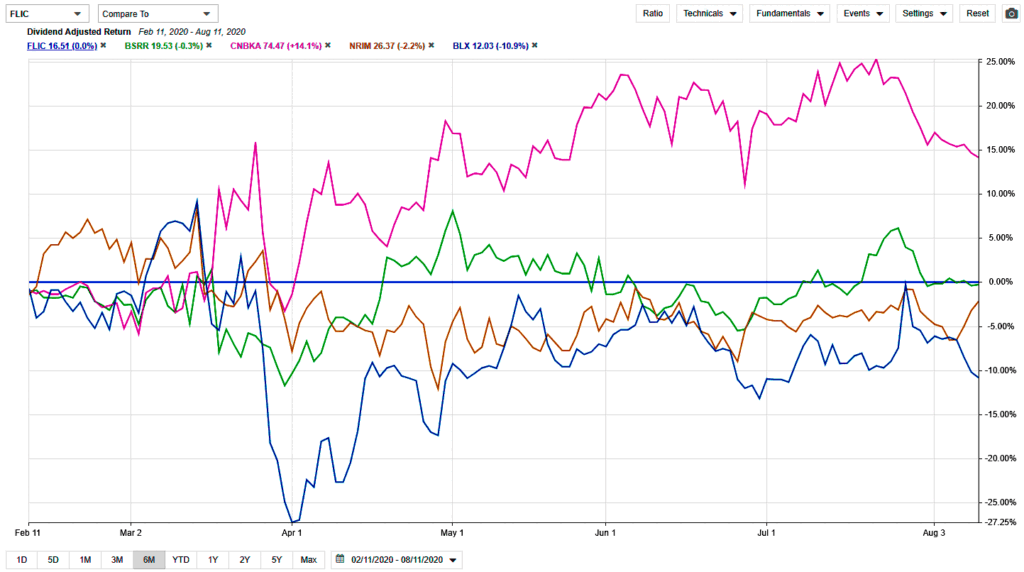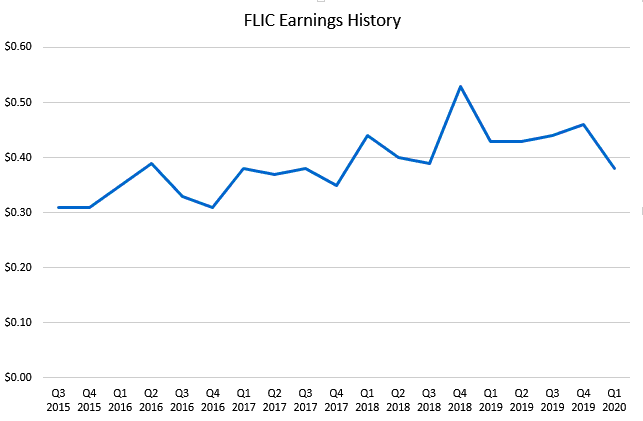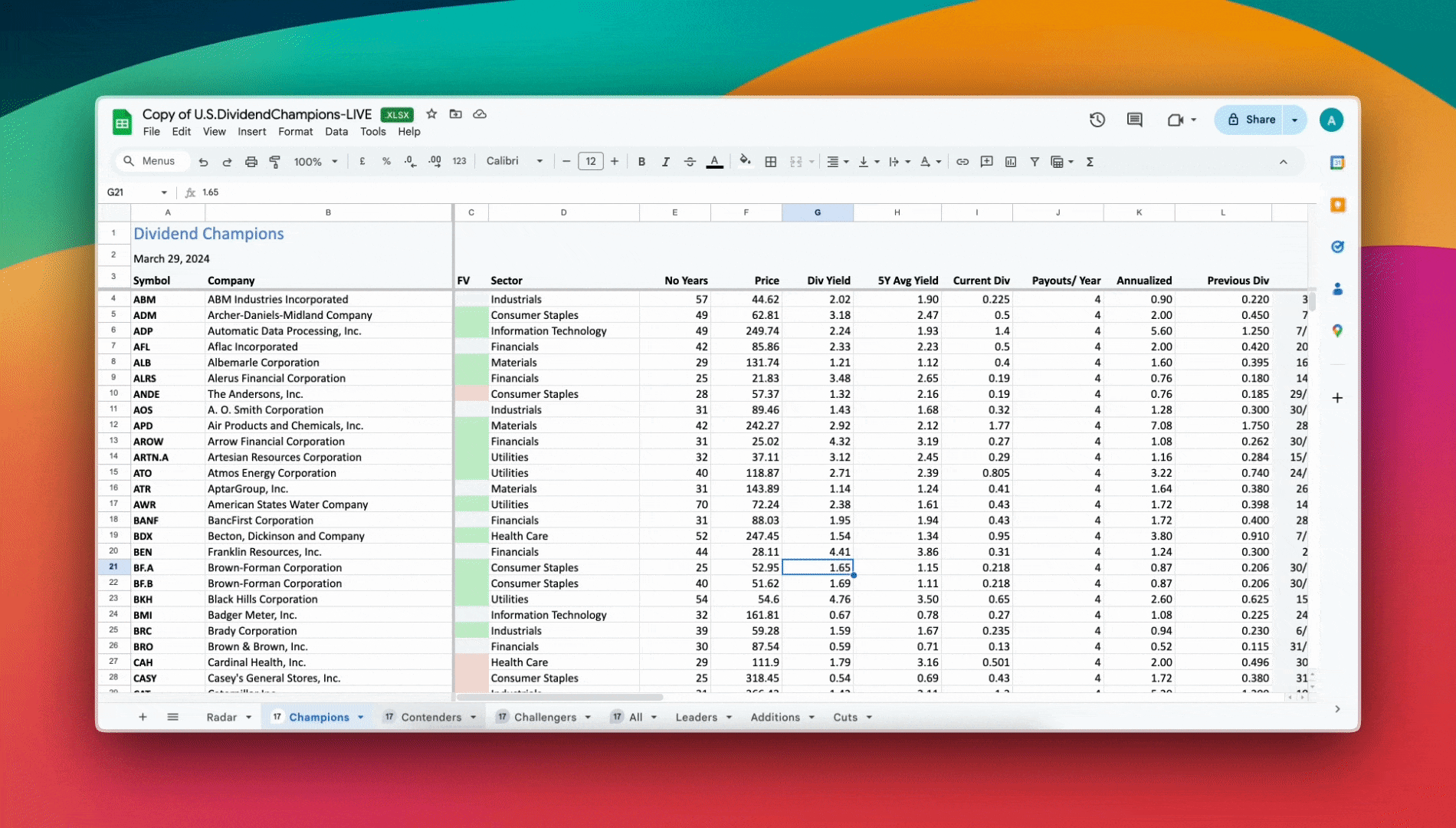With 24 consecutive years of dividend increases, First of Long Island Corporation is nearing the point where they will become a Dividend Champion. It is time to examine it to see if it might be a good fit for your portfolio.
When I think of companies, my mind generally tends toward the large ones. I have filled my portfolio with behemoths like MMM, Aflac, and Johnson & Johnson, market capitalizations respectively of $93, $27, and $390 billion. They are so large that attempting to grasp numbers of that size leads to absurdity. For instance, if one were to stack MMM’s market cap in dollar bills, the pile would be over 6,000 miles high. You literally could not live long enough to spend all that money at the rate of $20 per second in a lifetime.
I make this point because a small-cap stock can still have a capitalization of up to $2 billion (a stack of dollar bills about 135 miles high, but spendable in a little over three years), which is still a difficult number to fathom. First of Long Island Corporation sports a market capitalization of “only” $390 million (a stack of dollar bills only 27 miles high, and spendable in just five and a half hours), which makes it one of the smallest of the small companies not in the pink sheets.
Start with Interactive Brokers
Overview
First of Long Island Corporation (NASDAQ: FLIC) has been around since 1927, just a couple of years before the start of the great depression. It was 30 years before they opened a second branch, and since 1997 they have raised their annual dividend every year, which includes surviving two recessions. They provide financial services to individual, corporate, and government customers on Long Island, Manhattan, and Queens in New York City.

Above is a five-year chart of FLIC, which shows both opportunity and concern. After rising steeply, it fell in 2018, and then like all other stocks, fell again in March of this year. Understanding these moves will bring insight into the company’s potential benefits and failures.
First of Long Island Corporation primarily relies on its commercial and residential mortgages, so the primary driver is real estate in New York City. In 2018 Manhattan real estate suffered its worst year since 2009, due to an oversupply of high-end apartments, combined with cooling of demand from foreign buyers due to new laws aimed at money laundering.

As far as the problem with Covid-19 is concerned, I wanted to see how First of Long Island compared over the past six months with its peers to see if its lack of rebound might be unique. As per the graph above, FLIC is having the same problems that similar companies are seeing during this time.
Of interest to dividend investors are three primary metrics, dividend yield, payout ratio, and dividend growth – what do they have to offer, if they can offer it, and if they offer it willingly. The numbers in this regard are positive for First of Long Island Corporation.
The dividend yield answers the “What do you have to offer?” question with a value of around 4.5%, which is quite attractive. Again referencing the chart above, one can see that the drop in price has doubled the yield since early 2018. But a high dividend yield is not necessarily a good thing if it goes away. The payout ratio offers a clue as to whether or not that is likely to happen.
Payout ratio is the proportion of dividend to earnings, and lets us know if the company is able to sustain its dividend. When it exceeds 100% this means that the company is giving money to investors that it does not have. In the case of First of Long Island Corporation, the payout ratio is around 42%, so there is plenty of room for the dividend. The company has been consistent with this percentage over the years, never getting as high as 45%. The ability to pay is one thing, but the willingness to pay is another, which is why we examine dividend growth.
The fact that FLIC is soon to become a Dividend Champion answers the third part of the equation. Offering not only a dividend but also a dividend increase for 24 years is no easy feat. Even during the housing crash of 2008, when many other banks went belly up, FLIC continued increasing its dividend. According to the Dividend Champions spreadsheet, they have done so not by merely offering a small token increase to maintain the streak, but have been generous to their shareholders.
| DGR | DGR | DGR | DGR |
|---|---|---|---|
| 1-yr | 3-yr | 5-yr | 10-yr |
| 11.30% | 8.50% | 7.90% | 7.70% |
Dividend growth tells us how important the company feels its dividend is to its shareholders, and the healthy percentages shown in the chart indicate that this is more than a cursory exercise for FLIC. First of Long Island Corporation hits each of the three dividend benchmarks squarely without hesitation.
The final check is that of current valuation. The P/E of 10 is close to what one might expect of a larger bank – small regional banks typically average around 17, so the share price is attractive. Price to Book, which compares the company’s market capitalization to its book value, is a more valuable number when examining a bank. Its current value of around 1 places it at neither premium nor discount.

As First of Long Island Corporation is not a growth company, there is no expectation for earnings to shoot up. A general trend upward indicates support to an increasing dividend into the future, and their slow and steady approach brings comfort to the dividend investor. If a company’s earnings do not increase it then becomes difficult to allow the dividend to increase.
Finishing Up
First of Long Island Corporation appears to be a sound bank with a consistent and attractive dividend that should continue to grow over time. On the other hand, it does not have a diversification of inflows of money, so it is subject to the whims of the New York City real estate market. This issue of diversification could affect share price and be a cause for increased volatility.
In the few days I have looked at FLIC to prepare this article, FLIC has seen quite a bit of that volatility. From August 6-12, 2020, the share price increased by 8% and 20% over the past month. That sounds great, but it is down about a third since the beginning of the year. As I said, this could be a volatile stock, which is commonly not where one who purchases bank stocks wishes to be. I will leave it to the reader to determine how appropriate this small company might be as an addition to their portfolio.
